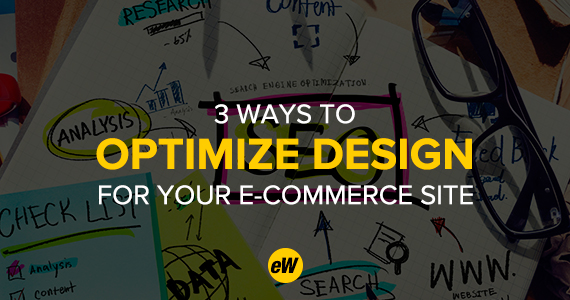 A website’s look has a lot to do with how your store attracts visitors, keeps them browsing and entices them to place orders. However, good design isn’t always intuitive to e-commerce site owners. Even if you understand the value of good photography, graphics and page layout, it takes some thought – and, sometimes, some trial and error – to put these elements together in a way that’s both pleasing to the eye and tempting to the mouse-clicking finger. Optimize your site’s design with these 3 simple tips.
A website’s look has a lot to do with how your store attracts visitors, keeps them browsing and entices them to place orders. However, good design isn’t always intuitive to e-commerce site owners. Even if you understand the value of good photography, graphics and page layout, it takes some thought – and, sometimes, some trial and error – to put these elements together in a way that’s both pleasing to the eye and tempting to the mouse-clicking finger. Optimize your site’s design with these 3 simple tips.
Tip 1: Be selective about your offerings. Studies have shown that shoppers can be overwhelmed by too many choices, especially when the differences between products aren’t always evident. On the other hand, shoppers do like having a few options from which to choose, as long as there aren’t so many that they lead to “analysis paralysis.” Carefully consider your products and decide when too much becomes too much. For example, shoppers seeking customized t-shirts may welcome the choice of 5 shirt colors and 10 designs, but find themselves stuck if forced to decide from 50 shirt colors and 100 designs. Too many options may cause shoppers to walk instead of click. Create categories to organize products in an effective manner.
Tip 2: Make sure copy and graphics balance each other. Some shoppers gravitate toward visual input, while some prefer reading text about products. Be sure to appeal to both types of shoppers by treating these important informational elements equally on your site. Don’t skimp on quality photography, because we know that a photograph can be worth a thousand words. However, don’t economize on copy either; this is where you can be specific about materials, dimensions and craftsmanship in ways a photograph can’t convey. In our t-shirt example, provide good photos of the entire shirt, plus a close-up of your customization work, then inform shoppers via the copy that the shirt is 100% pre-shrunk cotton, with original decorations that you applied using the strongest craft adhesive.
Tip 3: Orientation matters. On your site, do your products scroll across the page from left to right, or top to bottom? Studies have shown that viewing a product line horizontally (i.e., from left to right) gives shoppers the perception of more variety than if the products are arranged vertically (i.e., top to bottom). If customers are able to easily view multiple products without needing to scroll down or open new website pages, they tend to perceive variety in your offerings. By having more products in view in the left-to-right arrangement, you’re increasing the likelihood of add-on and impulse purchases; on the other hand, vertical viewing limits what the shopper sees.
The Bottom Line
Recognizing good e-commerce site design can be as simple as paying attention to the sites where you prefer to shop. If you aren’t seeing the sales numbers you’d like, review these 3 tips to further optimize design for your e-commerce website.


![[Infographic] The State of E-Commerce in 2015](https://www.ecommerceweekly.com/wp-content/uploads/2015/03/150x150state-of-ecommerce.gif)



